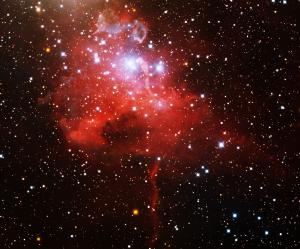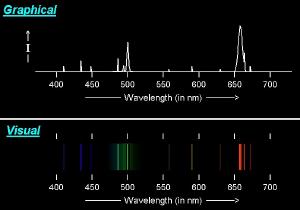Blog
Red Light District
27 September 2014
 T.A. Rector (University of Alaska Anchorage) and H. Schweiker (WIYN and NOAO/Aura/NSF)
T.A. Rector (University of Alaska Anchorage) and H. Schweiker (WIYN and NOAO/Aura/NSF)There’s a lot of gas and dust in the universe. Some of it has coalesced into dark nebulae, such as bok globules that almost look like holes in the starry night. We can observe these by the background light they absorb. Some clouds of dust are close enough to a star that light reflects off them, creating reflection nebulae such as the one near T Tauri. But sometimes a cloud of gas and dust is near a hot star, but too diffuse to scatter light much. In this case it can produce a faint nebula known as an emission nebula.
 Les Tomley
Les TomleySince hydrogen is by far the most common element in the universe, these nebulae are mostly made up of hydrogen. When ultraviolet light from a nearby star strikes the hydrogen, the gas becomes partially ionized. When the hydrogen recombines, it emits light. Because the light emitted is mainly at red wavelengths, these emission nebulae typically appear as faint red clouds.
In astronomy these nebulae are often known as H II regions due to their quantities of ionized hydrogen. Because of their spectrum they can be identified in other galaxies, and since they only appear near very bright (and thus short lived) stars, they can be used to measure stellar production rates in galaxies. When both the H II region and bright nearby stars can be observed, we can also get an idea of a galaxy’s distance.
A few of the brightest nearby H II regions can be seen with the naked eye, but they weren’t noticed until after the introduction of telescopes. With modern astrophotography we can get wonderful images of these faint hydrogen clouds. Most of the popular images of nebulae have brilliant reflection regions and sharply contrasting absorption regions. But the faint emission nebulae have a beauty all their own, and they help us better understand both our own galaxy and others.